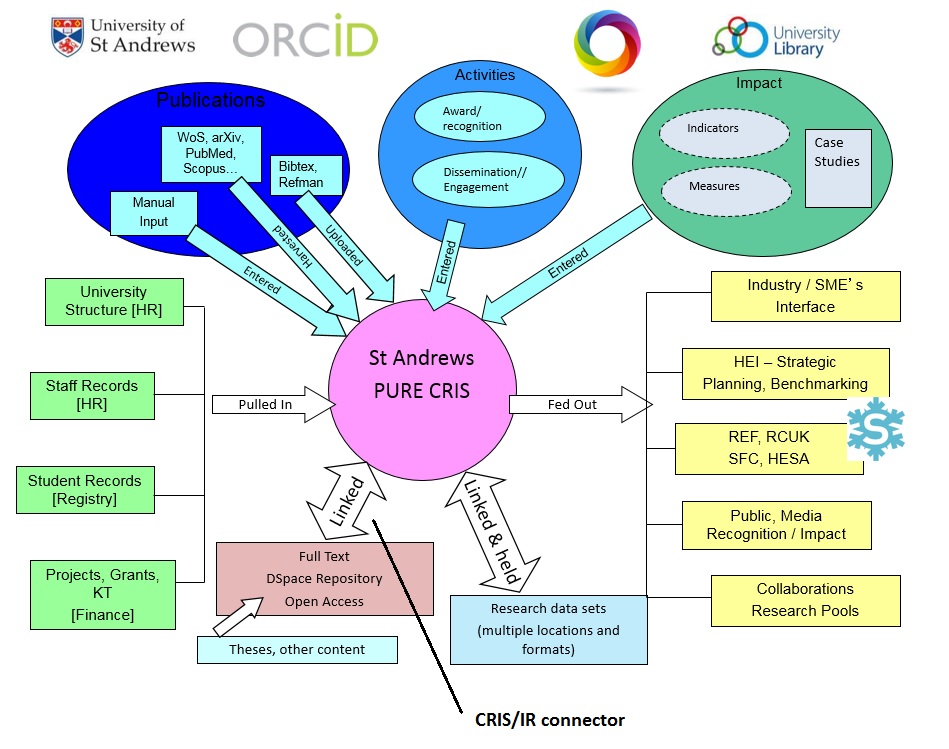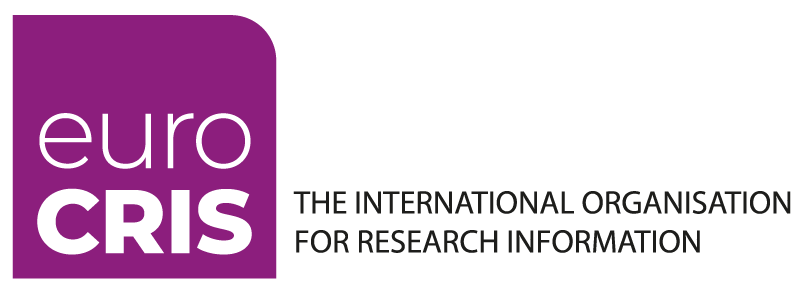The so-called 'connector' between Current Research Information Systems (CRIS) and Institutional Repositories (IR) is a piece of software that allows the exchange of information between the two platforms.
This exchange typically involves bibliographic metadata for publications getting transferred from the CRIS to the IR after it's been automatically ingested into the former from international databases such as Scopus or WoS (and usually enriched with additional elements).
This mechanism for information exchange will ideally allow an effective coupling of both systems – which were actually designed to meet different needs and objectives, with the former being more oriented towards internal research information management and the latter aiming to maximize the exposure of the institutional research outputs to the outside world – to better serve an institution's goals in different areas.
CRISs and IRs rely on different metadata standards, CERIF being the most frequent one for the former, DublinCore (DC) or the more advanced MODS for the latter ones. This poses some challenges for system interoperability purposes, since the kind of semantic relations that CERIF describes between its different main entities (person, organisation, project) are occasionally difficult to translate into a much 'flatter' DC or MODS standard which does not allow these relations to be easily expressed.
This said, the basic system interoperability may indeed be achieved through this connector, and there are plenty of fully operational instances of institutions running a CRIS+IR system configuration that rely on the connector for the regular metadata transfer into the institutional repository, saving both researchers and the IR team a significant amount of time. The most frequent example for this effective system interoperability is the connector that links a Pure CRIS to an EPrints or DSpace institutional repository. UK universities like St Andrews (DSpace), Strathclyde (EPrints), York (EPrints) or Lancaster (EPrints) all run a Pure CRIS that exports the publication references to their institutional repository adding the appropriate full-text file as part of the process. This allows an effective discussion on this system interoperability area to be held within the Pure UK User Group, but this specific CRIS+IR configuration is rather frequent in other countries too.

Figure: Anna Clements, Pure CRIS interoperability at the University of St Andrews
There are numerous issues however regarding the current functionality of such CRIS/IR connectors. This series of posts aims to explore the wide range of issues that arise when exploring the current CRIS/IR interoperability practice in this specific area. The euroCRIS CRIS/IR Interoperability Task Group seems particularly suitable for the purpose of collecting and summarizing these issues on behalf of the CRIS/repository community. There is of course a very broad spectrum of current institutional configurations that cover many different combinations of CRIS and IR platforms, and this first post will not aim to address all the issues in detail nor to focus on a specific configuration. This series of posts will look into major interoperability issues around infrequent configurations, but the emphasis will mainly lie on the most frequently used CRIS and repository platforms, i.e. Pure, Converis and Symplectic on the CRIS side and EPrints and DSpace on the repository side.
The evidence-gathering work to be done by the euroCRIS TG in this area aims to become a community-based task that allows institutions to share their views, concerns and wishes with the wider community. The main goals of this effort are to shed some light on the current CRIS/IR interoperability landscape and to allow a conversation on the topic to take place across institutions in different countries. While there are ongoing discussions on this area mainly taking place within the national CRIS user groups, the CRIS/IR Interoperability Task Group's view is that it may be worth opening up such discussions to a broader audience, also with a wider aim of eventually summarizing the most pressing issues, disseminating them at the euroCRIS membership meetings and officially sharing them with the CRIS vendors for their consideration.
It may be argued that this exchange of views with the CRIS vendors already happened at their international user group meetings, and incidentally not just on the issues around the CRIS/IR connector but on a much wider range of aspects related to CRIS functionality. While this is true, it is also a fact that those institutions running unusual CRIS+IR configurations that do not involve a major vendor may lack opportunities to discuss their own issues. Moreover, it's also worth setting up a discussion forum aimed to follow the progress on the solution of the issues around the CRIS/IR connector that were reported in the abovementioned international user groups.



Comments
Solve this issue with DSpace-CRIS!
Pages